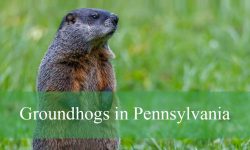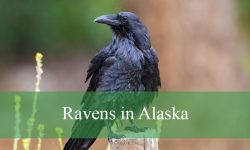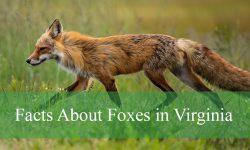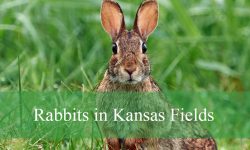As dawn rises over the still waters of a northern Minnesota lake, mist curls above the surface, and a distant call breaks the silence — deep, resonant, and hauntingly beautiful. From the reeds, a white figure emerges, gliding with effortless grace. Its long neck curves like a question mark against the light, wings folded in quiet confidence. These are the swans in Minnesota, the elegant guardians of the state’s lakes and wetlands.
To most people, swans symbolize beauty and tranquility. But behind their serene appearance lies a story of resilience, intelligence, and hard-won recovery. Once nearly extinct from Minnesota’s waters, these birds have reclaimed their rightful place as icons of the state’s wild spirit.
In this in-depth exploration, we reveal the secrets of Minnesota’s swans — their history, behavior, family life, migration patterns, and the incredible comeback that turned them from ghosts of the past into living emblems of grace.
Meet Minnesota’s Swans
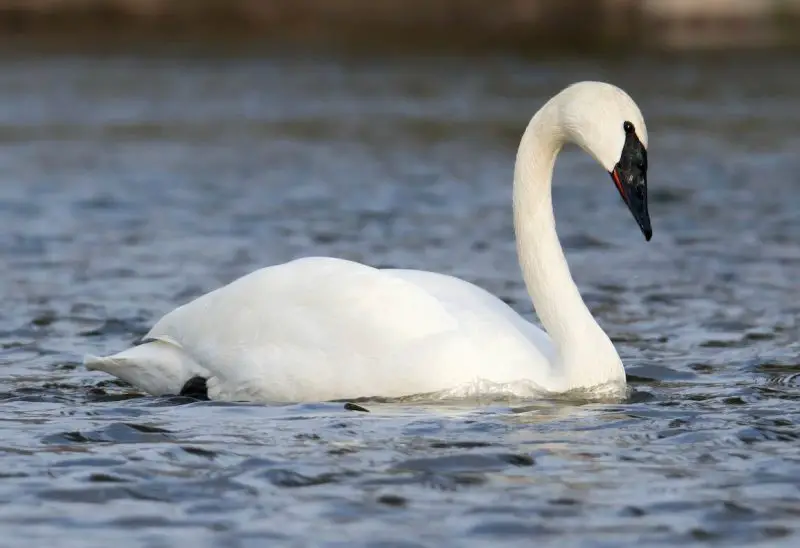
The Trumpeter Swan: A Symbol of Survival
The most prominent species of swans in Minnesota is the trumpeter swan (Cygnus buccinator) — the largest native waterfowl in North America. With wingspans exceeding eight feet and weights of up to 30 pounds, these giants once graced nearly every wetland and lake across the upper Midwest.
They are named for their deep, trumpet-like call, a sound that can carry for miles across calm water. Their pure white plumage, long black bills, and stately presence have long made them symbols of purity and strength in northern folklore.
However, by the late 1800s, the trumpeter swan had vanished from Minnesota — victims of overhunting, egg collecting, and habitat loss. Their recovery, decades later, is one of the state’s greatest conservation triumphs.
The Tundra Swan: The Migrant from the North
Alongside the resident trumpeters, tundra swans (Cygnus columbianus) pass through Minnesota each spring and fall during migration. These smaller, more delicate swans breed in the Arctic and stop over at lakes and rivers in western Minnesota to rest and feed.
Unlike trumpeters, tundra swans have a soft, bugling call and a yellow spot at the base of the bill. They travel in family groups, their calls echoing through autumn skies as they head for the Atlantic coast.
Together, these two species — one native and restored, the other migratory and wild — define the seasonal rhythm of swans in Minnesota.
The Return of the Trumpeter Swan
From Extinction to Restoration
By the early 1900s, trumpeter swans were believed extinct in the lower 48 states. Then, in the 1930s, a small remnant population was discovered in remote parts of Alaska and Montana.
In the 1980s, Minnesota’s Department of Natural Resources (DNR), with support from the Trumpeter Swan Society and local volunteers, began reintroduction efforts. Eggs were collected from Alaska and hatched in Minnesota under careful monitoring.
The first releases took place near the Tamarac National Wildlife Refuge and Hennepin County wetlands. Decades later, the results are astonishing: Minnesota now hosts more than 30% of North America’s trumpeter swan population.
Minnesota’s Swan Comeback Story
From a few dozen birds in the 1980s, there are now over 30,000 swans in Minnesota, spread across more than 200 lakes and wetlands. Places like Itasca State Park, Swan Lake in Nicollet County, and Monticello on the Mississippi River have become famous for their wintering swan flocks.
Their recovery reflects decades of collaboration between biologists, conservationists, and local residents — proof that when humans choose stewardship over exploitation, nature answers in song.
Life on the Lakes
Choosing a Home
Swans are particular about their nesting sites. They prefer shallow freshwater lakes and marshes rich in aquatic vegetation — areas undisturbed by boats or predators.
Trumpeter swans in Minnesota often return to the same lake each year, claiming territories that can span several acres. Their nests, enormous mounds of reeds and grasses, can reach six feet in diameter and three feet high.
These structures, usually built near shorelines or on floating vegetation mats, are reused and expanded season after season — living monuments to swan persistence.
The Rhythm of the Seasons
From spring thaw to autumn freeze, swans in Minnesota follow a predictable yet dramatic yearly cycle.
In March and April, pairs return to their territories, often still covered with ice. As waters open, they reinforce old nests and prepare for breeding.
By May, cygnets hatch — downy gray balls that ride on their parents’ backs for warmth and safety. Through summer, families feed in calm bays and wetlands, the young learning to forage and swim.
As fall approaches, the cygnets grow flight feathers, practicing short glides until strong enough to join their parents in flight. By late October, they depart — migrating south to ice-free rivers or remaining on open Minnesota waters if conditions allow.
Diet and Feeding Behavior
Aquatic Gardeners
Swans are herbivores, feeding mainly on submerged vegetation. They use their long necks to reach underwater plants, pulling up roots, stems, and leaves of pondweeds, sedges, and wild celery.
This feeding behavior helps control plant overgrowth and aerates lakebeds, promoting nutrient cycling. In this way, swans in Minnesota are not just beautiful — they’re ecological engineers maintaining lake health.
During migration or winter, they also graze on leftover grain in fields, joining ducks and geese to glean spilled corn and oats.
Feeding the Young
Cygnets begin feeding themselves within a few days but rely on parents to guide them to rich feeding grounds. Adults often stir up the lake bottom with their feet to expose edible plants and insects.
By mid-summer, young swans can reach nearly half their adult size — a testament to the rich productivity of Minnesota’s waters.
Social Life and Behavior
Mates for Life
Swans are among the few animals that form lifelong pair bonds. Once bonded, trumpeter swans remain together year-round, sharing territory defense, nest building, and chick rearing.
These bonds are reinforced through synchronized displays — mutual head-bobbing, trumpet duets, and gentle preening. Such rituals strengthen cooperation and maintain harmony within the pair.
If one partner dies, the survivor may mourn for an entire season before seeking a new mate — an emotional intelligence rare among birds.
Family Bonds and Flock Dynamics
Swan families are tight-knit units. Parents guard their cygnets fiercely, chasing away intruders with loud trumpets and wing displays.
As autumn approaches, they join larger flocks for migration. During these gatherings, social hierarchies form, with older pairs leading younger ones. Their collective movements — rising in formation over golden lakes — mark one of Minnesota’s most breathtaking wildlife spectacles.
Even in wintering grounds, families stay together until spring, when the cycle begins anew.
Intelligence and Communication
Language of the Lakes
Swans in Minnesota communicate using a wide range of vocal and visual signals. Their deep calls convey warnings, greetings, or location updates. Soft grunts and whistles between pairs express affection or coordination.
Body language is equally expressive — neck positions, wing arches, and synchronized swimming all carry meaning. Researchers have documented over 20 distinct swan vocalizations used for everything from alarm to comfort.
Their emotional intelligence and empathy are striking — qualities that may explain their enduring bond with one another and their symbolic status across cultures.
Swans and Learning
Studies show that young swans learn behaviors from their parents long after fledging. Navigation routes, feeding techniques, and even vocal patterns are passed down generationally — a form of avian culture.
In Minnesota’s conservation areas, researchers have documented regional differences in calls and behaviors, suggesting local “dialects” among swan populations. It’s a reminder that even within one species, life adapts to place, sound, and history.
Swans and Minnesota’s Ecosystems
Symbols of Recovery
Few animals better represent ecological renewal than the swans of Minnesota. Their return has restored not only a lost species but also the natural harmony of wetlands once silenced by their absence.
Their feeding activity maintains open water zones and prevents marshes from choking with vegetation. Their nesting behavior creates habitats for smaller birds, frogs, and aquatic insects.
In short, swans are catalysts of biodiversity — beauty with purpose.
Partners of the People
The story of swans in Minnesota is also a human story. Volunteers, wildlife agencies, and local communities have worked tirelessly to protect wetlands, monitor nests, and educate the public.
At places like Monticello, residents feed overwintering swans, keeping ice-free river sections open for hundreds of birds each year. Schools teach children about swan conservation, ensuring future generations continue the stewardship legacy.
This partnership between people and wildlife has turned Minnesota into one of the nation’s leading swan strongholds — a living example of coexistence done right.
Challenges and Conservation
Modern Threats
Despite their recovery, swans still face dangers. Lead poisoning from discarded fishing tackle remains a major threat. Swans ingest lead shot or sinkers while foraging, leading to fatal poisoning.
Collisions with power lines and habitat loss from shoreline development also jeopardize their populations. Climate change, altering ice melt patterns and food availability, adds new uncertainty.
Wildlife managers urge anglers to use non-toxic alternatives and property owners to maintain natural vegetation buffers around lakes.
The continued success of swans in Minnesota depends on these everyday acts of responsibility.
The Power of Protection
Legal safeguards under the Migratory Bird Treaty Act protect all swan species from hunting and harassment. Minnesota’s DNR and conservation partners monitor nesting success, band birds for research, and restore wetlands critical for breeding.
Public education remains vital. Understanding swans not as decorative creatures but as vital parts of the ecosystem ensures lasting respect — and survival.
Cultural and Historical Connections
The Swan in Native and Northern Traditions
For many Indigenous peoples of the Great Lakes, swans symbolize transformation and connection between water and sky. Their return each spring marks renewal and balance.
Early European settlers viewed them as symbols of peace and fidelity, while northern folklore often cast them as messengers of love or omens of change.
To this day, swans inspire artists, poets, and photographers across Minnesota — their images gracing murals, town emblems, and conservation logos statewide.
Swans in Modern Minnesota
From Duluth’s harbor to Bemidji’s lakes, swans have become part of the state’s identity. Each winter, residents gather to watch flocks on open water, their white forms glowing against the ice.
Local economies benefit through eco-tourism, with birdwatchers traveling from across the Midwest to see these graceful giants in their natural habitat. The swan’s story — from extinction to abundance — reflects Minnesota’s larger ethos: a balance between wilderness, water, and human care.
Myths and Misunderstandings
Are Swans Dangerous?
Swans are protective, not aggressive. During nesting season, they defend their territory vigorously, but their goal is deterrence, not harm. Maintaining respectful distance — especially during breeding — prevents conflict.
Their displays of raised wings and hissing are warnings, not attacks. Observing them from afar ensures safety for both bird and viewer.
Do Swans Mate Forever?
Most trumpeter swans do form lifelong bonds, though some pairs “divorce” after failed breeding seasons. Still, their loyalty and devotion to family life remain exceptional among birds — one reason they’ve become enduring symbols of love and fidelity.
Are All Swans Native?
No. While trumpeter and tundra swans are native to North America, the mute swan (Cygnus olor) — introduced from Europe — can occasionally be seen in southern Minnesota. However, it is non-native and sometimes competes with native species.
Conservationists prioritize protecting native trumpeters as they represent Minnesota’s true wild legacy.
Surprising and Little-Known Facts About Swans in Minnesota
-
Trumpeter swans can live over 25 years in the wild.
-
They produce more than 20 unique vocalizations.
-
Their feet and bills are black from birth — a key difference from tundra swans.
-
Adult swans can consume up to 8 pounds of aquatic vegetation daily.
-
Cygnets ride on their parents’ backs for warmth and safety.
-
Swans can fly up to 50 miles per hour in migration.
-
They use the same nesting territories for decades.
-
Swans molt in summer, temporarily losing their flight feathers.
-
A swan’s wings can break ice to create feeding areas in winter.
-
The town of Monticello is nicknamed “Minnesota’s Swan City.”
FAQs About Swans in Minnesota
What species of swans live in Minnesota?
The trumpeter swan (year-round resident) and tundra swan (migrant).
Are swans native to Minnesota?
Yes, the trumpeter swan is native and has been successfully reintroduced after near extinction.
Where can I see swans in Minnesota?
Top sites include Monticello, Itasca State Park, Swan Lake, and Tamarac Refuge.
Do swans migrate?
Trumpeter swans may migrate short distances, while tundra swans travel thousands of miles each year.
What do swans eat?
Mainly aquatic vegetation, roots, and tubers; occasionally grain during migration.
Are swans protected in Minnesota?
Yes, under federal and state laws — harming them is illegal.
How many swans are in Minnesota today?
More than 30,000 and steadily increasing.
Can I feed swans?
It’s discouraged. Feeding can disrupt their natural diet and behavior.
Do swans have natural predators?
Coyotes, eagles, and snapping turtles occasionally prey on eggs or cygnets.
How can I help protect swans?
Use lead-free tackle, support wetland conservation, and observe respectfully from a distance.
Final Thoughts
The swans of Minnesota lakes embody more than elegance — they represent endurance, intelligence, and the power of renewal. Once silent from extinction, they now fill the northern skies with the echoes of their trumpeting calls, a sound that speaks to resilience and balance.
Every time a pair glides across a frozen lake at dawn, they remind us that beauty and survival can coexist — that patience and protection can restore what once seemed lost.
The truth about swans in Minnesota is that they’re not merely graceful ornaments of the wild. They are living testaments to the harmony between people and nature — symbols of a landscape that, against all odds, learned to sing again.

